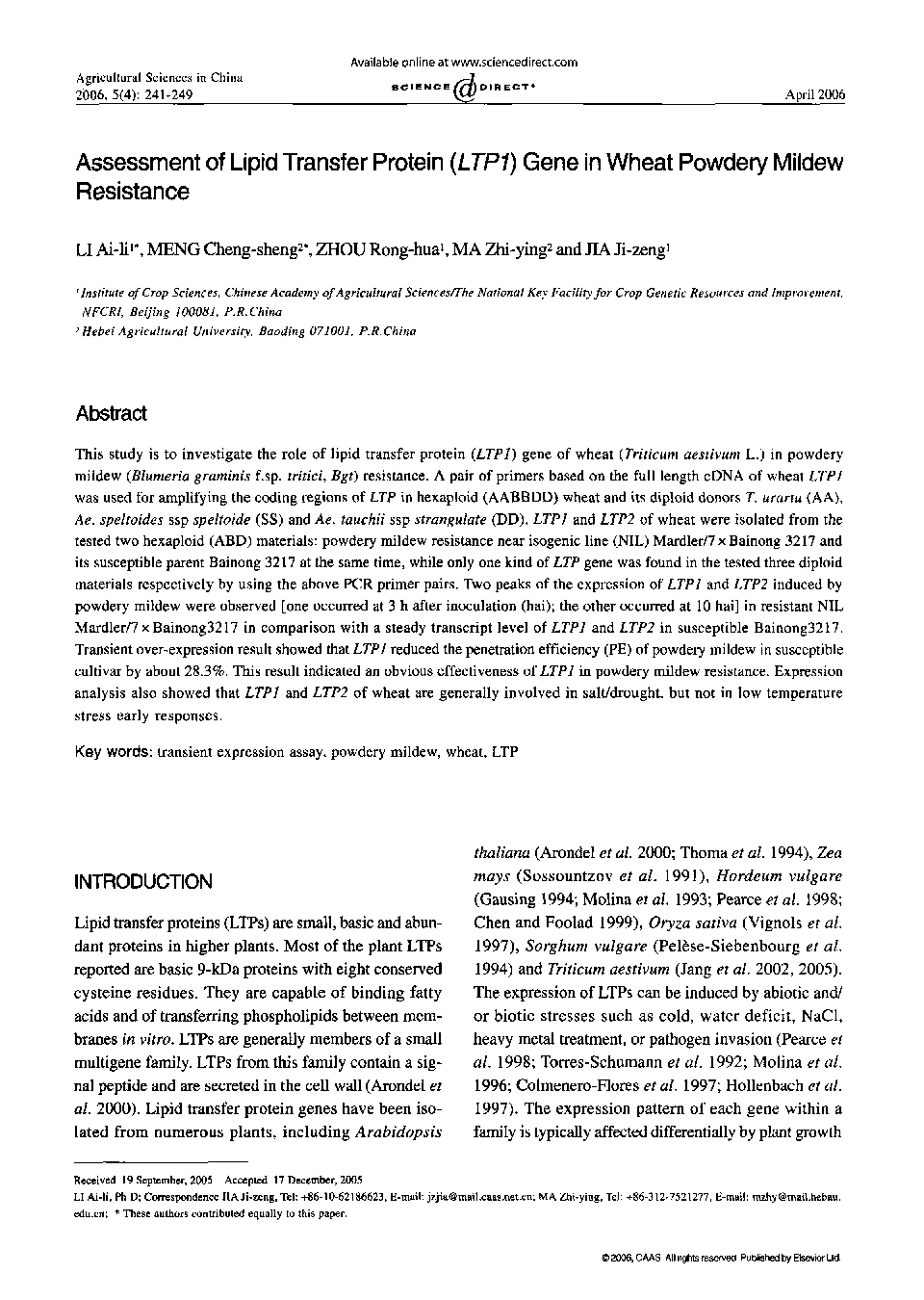| Article ID | Journal | Published Year | Pages | File Type |
|---|---|---|---|---|
| 4490987 | Agricultural Sciences in China | 2006 | 9 Pages |
This study is to investigate the role of lipid transfer protein (LTP1) gene of wheat (Triticum aestivum L.) in powdery mildew (Blumeria graminis f.sp. tritici, Bgt) resistance. A pair of primers based on the full length cDNA of wheat LTP1 was used for amplifying the coding regions of LTP in hexaploid (AABBDD) wheat and its diploid donors T. urartu (AA), Ae. speltoides ssp speltoide (SS) and Ae. tauchii ssp strangulate (DD). LTP1 and LTP2 of wheat were isolated from the tested two hexaploid (ABD) materials: powdery mildew resistance near isogenic line (NIL) Mardler/7 × Bainong 3217 and its susceptible parent Bainong 3217 at the same time, while only one kind of LTP gene was found in the tested three diploid materials respectively by using the above PCR primer pairs. Two peaks of the expression of LTP1 and LTP2 induced by powdery mildew were observed [one occurred at 3 h after inoculation (hai); the other occurred at 10 hai] in resistant NIL Mardler/7 × Bainong3217 in comparison with a steady transcript level of LTP1 and LTP2 in susceptible Bainong3217. Transient over-expression result showed that LTP1 reduced the penetration efficiency (PE) of powdery mildew in susceptible cultivar by about 28.3%. This result indicated an obvious effectiveness of LTP1 in powdery mildew resistance. Expression analysis also showed that LTP1 and LTP2 of wheat are generally involved in salt/drought, but not in low temperature stress early responses.
